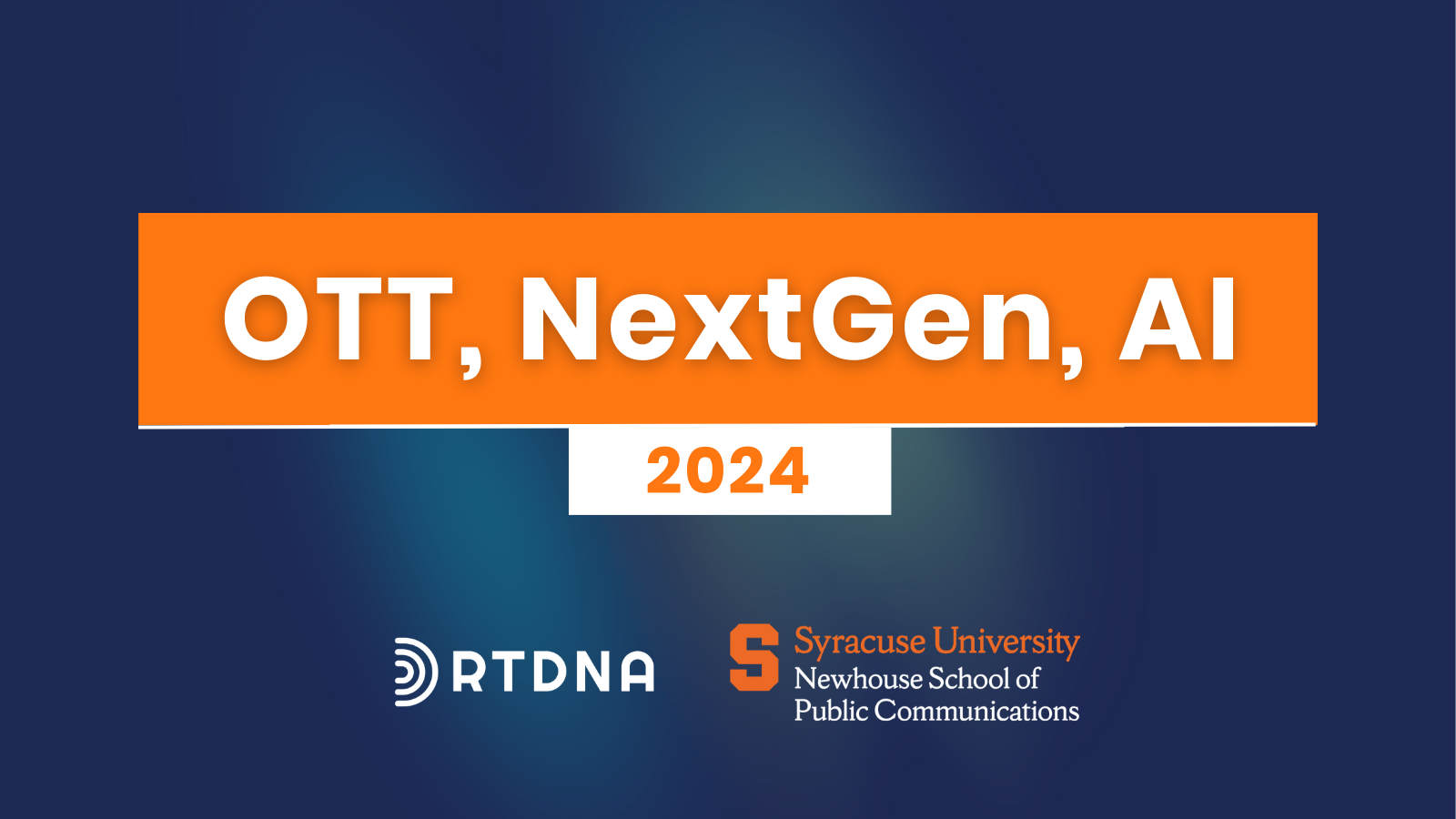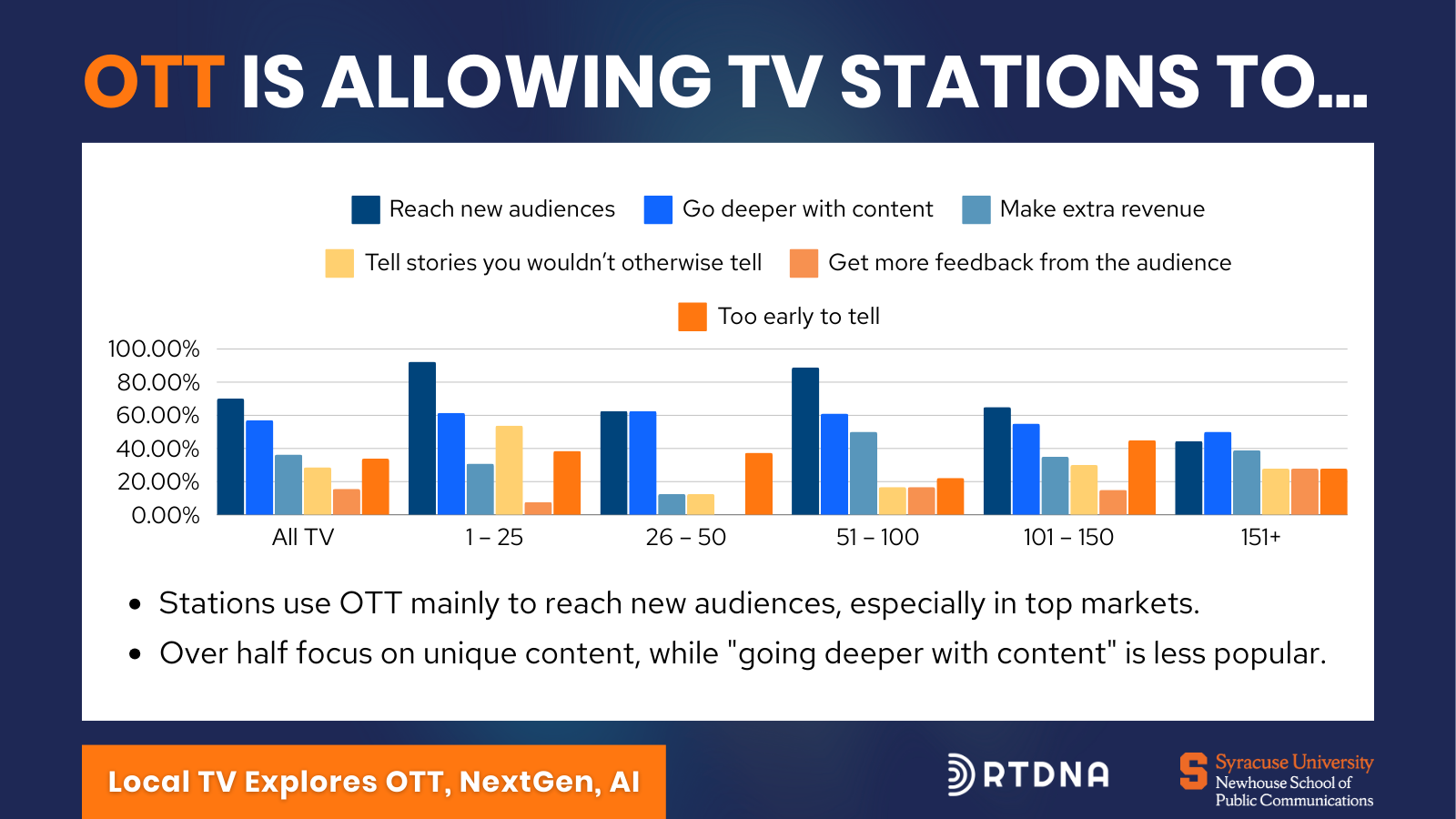Local TV explores OTT, NextGen, AI

By Bob Papper and Keren Henderson
This is the fifth year for the RTDNA/Newhouse School at Syracuse University Survey question: What, if anything, are you doing with OTT? It’s the fourth year that we’ve asked what, if anything, stations are doing with NextGen TV, and it’s the first time we’ve asked about artificial intelligence (AI).
OTT stands for over the top (sometimes called internet television or online television), and while there’s some disagreement over exactly what qualifies as over the top, it refers to program material that consumers receive via streaming rather than via cable, satellite, or telco. Most commonly, that content has arrived at consumers via Netflix or Hulu or Roku or YouTube, but more and more companies are setting up their own services: fuboTV, Amazon Prime, Sling TV, NBC Peacock, Paramount+ (CBS), Apple TV+, Android TV, Tubi, FilmRise, HBO Max, Philo, DirecTV, STIRR, Tegna’s (and Gray’s) Premion, CBSN (city) and Disney+ are some of the players.
Doing “something” with OTT has been edging up slowly since we’ve been watching it. At 59.9% “doing something” has hit its highest point, but it’s really a bit above the last two years.
All market sizes ranged from 54% to 64% — with no relationship between doing something and market size. The bigger the newsroom staff, the more likely that the station is doing something with OTT.

What are local TV stations doing with artificial intelligence (AI)? That’s a new question for this year’s RTDNA/Syracuse University Survey. More than a quarter (26.6%) of TV news directors reported that they’re doing “something” with AI. There were few relationships between doing something with AI and much of anything else. Stations in markets 26 to 50 were the most likely to say they were doing something, although the margin over top 25 markets was small. The smallest markets were the least likely to be involved. Staff size and AI bore no relationship, with newsrooms 11 to 20 the most involved, followed by newsrooms with 51+ staffers. CBS stations were less likely than other affiliates to be involved — as were stations in the Midwest.

About the Authors
Bob Papper is Research Professor of Broadcast and Digital Journalism at Syracuse University and has worked extensively in radio and TV news.
Keren Henderson is Associate Professor of Broadcast and Digital Journalism at Syracuse University.
This research was supported by the S. I. Newhouse School of Public Communications at Syracuse University and the Radio Television Digital News Association.
About the Survey
The RTDNA/Newhouse School at Syracuse University Survey was conducted in the fourth quarter of 2023 among all 1,876 operating, non-satellite television stations and a random sample of 4,764 radio stations. The television response rate is different for every question, but Valid responses came from as many as 1,387 television stations (73.9%) and 631 radio news directors and general managers representing 1,902 radio stations. Some data sets (e.g. the number of TV stations originating local news, getting news from others and women TV news directors) are based on a complete census and are not projected from a smaller sample.
